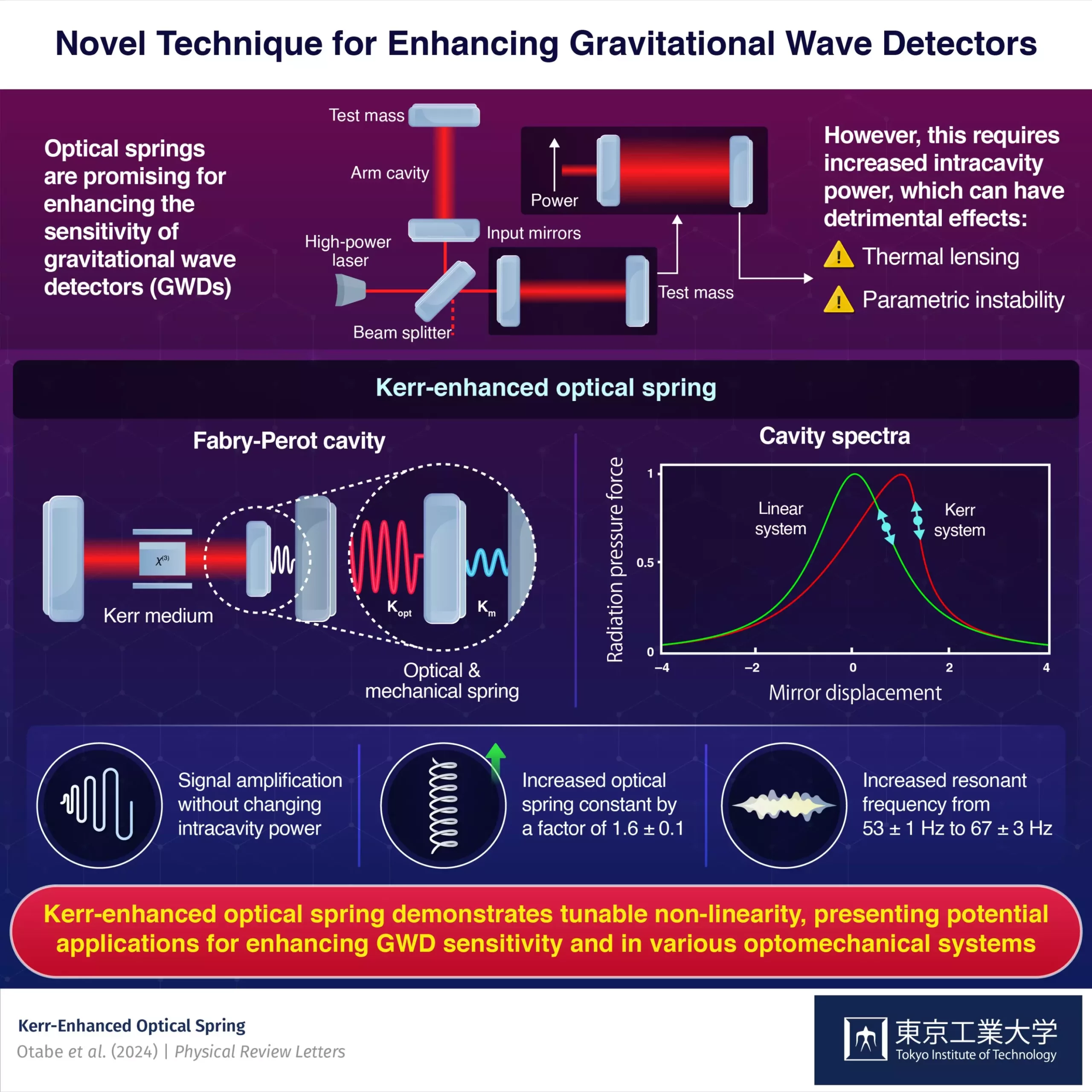The detection of gravitational waves has been a groundbreaking achievement in the field of modern physics. In 2017, the detection of gravitational waves from a binary neutron star merger revealed vital information about the universe. However, post-merger remnants have remained elusive due to the limitations of current gravitational wave detectors (GWDs). This has led to the urgent need for next-generation GWDs that can detect these elusive waves.
One way to enhance the sensitivity of GWDs is through signal amplification using optical springs. Optical springs utilize radiation pressure force from light to mimic spring-like behavior. The stiffness of optical springs in GWDs is determined by the light power within the optical cavity. Increasing the intracavity light power can enhance the resonant frequency of optical springs, but it can also lead to thermally harmful effects that may hinder detector performance.
To address these challenges, a team of researchers from Japan developed a groundbreaking solution known as the Kerr-enhanced optical spring. This innovative design involves utilizing the optical Kerr effect in a Fabry-Perot type optomechanical cavity by inserting a Kerr medium. The optical Kerr effect induces a change in the refractive index of the medium, resulting in a significant enhancement of the radiation pressure force within the cavity. This, in turn, increases the optical spring constant without the need to increase intracavity power.
The research team found that the optical Kerr effect successfully enhanced the optical spring constant by a factor of 1.6, leading to an increase in the resonant frequency of the optical spring from 53 Hz to 67 Hz. The researchers anticipate even larger signal amplification ratios with further refinement of technical issues. This innovative optical spring design is not only easy to implement but also provides a novel tuneable parameter for optomechanical systems.
The implications of this research extend beyond GWDs, as the enhanced optical spring design can also be applied to other optomechanical systems. The researchers believe that this technique will play a significant role in cooling macroscopic oscillators to their quantum ground state. Overall, this novel optical spring design represents a significant step towards unlocking the full potential of optomechanical systems and enabling enhanced GWDs to uncover the mysteries of the universe.
The development of the Kerr-enhanced optical spring represents a major advancement in the field of gravitational wave detection. By leveraging the optical Kerr effect, researchers have successfully enhanced the sensitivity and performance of GWDs without increasing intracavity power. This innovative design opens up new possibilities for future advancements in optical springs and optomechanical systems, paving the way for a deeper understanding of the universe’s secrets.


Leave a Reply